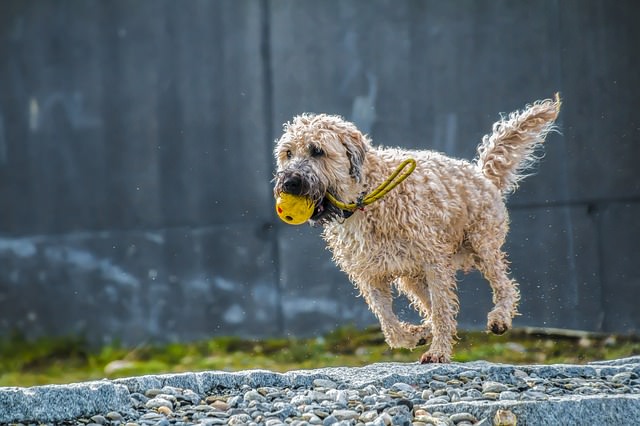Some dogs have more energy than others, even individuals within the same breed. While active dogs are beneficial to those looking for a regular exercise partner, they are often difficult to manage in your typical household.
Hyperactive dogs aren’t just limited to the working breeds, however. They come in all shapes, sizes and genetic backgrounds. In fact, where your dog came from or what kind he is really doesn’t matter – what matters is that hyperactive dogs are difficult to live with. So how can you get your pooch to calm down? Consider these 5 tips.
#1 – Exercise
Exercise is beneficial for both mind and body and more often than not, one of the root causes of hyperactivity in dogs is a lack of physical exercise. Some dogs do just fine with one walk a day, while others need more. Walking, running, hiking and playing fetch are all excellent ways to help your dog become more active.
Burning all of this energy will make your dog physically and mentally tired, meaning they’ll have less desire to be active at home. A tired dog is a good dog, they say, so bumping up the routine physical exercise is a great way to start combating hyperactivity in dogs.
Don’t have enough time on your own? Consider taking your pup to daycare or hiring a dog walker. If you have a dog that needs a lot of exercise, the only way to solve that problem is to provide it!

#2 – Interactive Toys
Interactive toys are a great way to keep your pup’s mind busy. Interactive toys come in all different shapes and sizes – some are puzzles your dog has to solve to get hidden treats, others are long-lasting chews that take hours to finally break down, and some others are various problem-solving games that make your dog think.
Almost all of them involve treats, so make sure you have your pup’s favorite snacks on hand. Just fill the toy per the instructions and watch your pup play a game all by himself. You’ll be surprised at both how long your dog will be entertained, but how smart he becomes at figuring it out!
#3 – Training
All dogs need basic obedience training, and if you’ve already covered that and have a dog that remains hyperactive, you don’t have to stop there. In fact, there are so many different tricks and commands to teach your dog, you never have to have an excuse to stop training. Using positive reinforcement, your options are unlimited.
There are various sports you can try – like competition obedience, agility or tracking – or you can teach complex tricks at home. Whatever you decide to do, make sure you and your dog are having fun. After all, that’s what it’s all about. All of this thinking will tire out your pup’s brain while teaching them some really neat things.

#4 – Daycare or Play Groups
Doggie daycare and play groups are an excellent way for your pup to burn some energy if he or she is friendly with other dogs. These groups allow our dogs to play together fully supervised by trained staff and you don’t need to be present for the fun. This makes it easier than taking your dog to a dog park, where they may run into poorly-trained or aggressive pups.
If your dog enjoys playing with other canine companions, letting them run around in a safe, enclosed area is a great way to tire out their minds and bodies. Remember how you felt after a long day playing with your friends? That’s how your pup will feel too.
#5 – Crate Train
When taught properly, crate training provides a safe, comfortable place for your dog to learn to relax. Crates offer an area for owners to keep their dogs unsupervised without worrying about destructive behavior that not only damages their home, but can lead to ingestion of dangerous objects and substances.
You can crate train a dog at any age using treats and positive reinforcement, and if done properly, you might find that your dog goes in his crate without you asking because it’s a safe, quiet den. For more information on crate training, visit our article here!
Related: Best Furniture & Wooden Dog Crates That Blend Into Your Home
 Toledo, United States.
Toledo, United States.